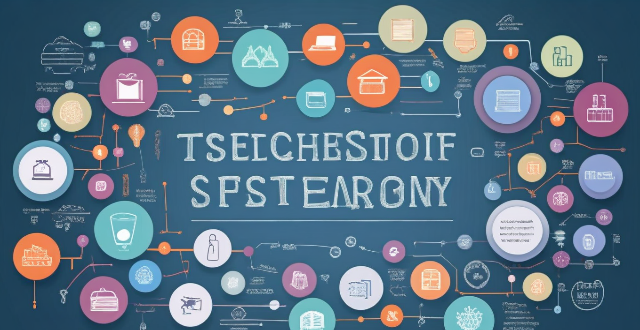The text discusses the role of technology in modern education systems, highlighting its ability to enhance accessibility, personalize learning experiences, improve collaboration and communication, refine assessment methods, and facilitate lifelong learning. It also acknowledges potential challenges such as the digital divide, overreliance on technology, and data privacy concerns. The conclusion emphasizes that while technology offers numerous opportunities for education enhancement, it should be integrated thoughtfully to avoid potential pitfalls.

The Role of Technology in Modern Education Systems
Introduction
Technology has revolutionized the way we learn, teach, and access information. In modern education systems, technology plays a crucial role in enhancing the quality of education, making it more accessible, and improving the overall learning experience for students.
Key Roles of Technology in Education
1. Enhancing Accessibility
- Online Learning Platforms: Technology enables students to access educational resources from anywhere in the world through online learning platforms like Coursera, Khan Academy, and edX.
- Digital Libraries: E-books, digital archives, and online databases provide easy access to vast amounts of information that would otherwise be difficult to obtain.
2. Personalizing Learning Experiences
- Adaptive Learning Software: These tools use algorithms to tailor instruction to individual student needs, adjusting the difficulty level and pace of learning based on performance.
- Gamification: Incorporating game elements into learning can increase engagement and motivation among students.
3. Enhancing Collaboration and Communication
- Virtual Classrooms: Tools like Zoom and Google Classroom facilitate real-time interaction between teachers and students, regardless of their physical location.
- Collaborative Projects: Technology enables group projects where students can work together remotely using tools like Google Docs or Microsoft Teams.
4. Improving Assessment Methods
- Automated Grading: Technology can automate the grading process for certain types of assignments, freeing up teachers' time for more personalized instruction.
- Data-Driven Insights: Analytics tools can provide teachers with valuable insights into student performance, helping them identify areas where additional support is needed.
5. Facilitating Lifelong Learning
- Just-in-Time Learning: The internet allows individuals to learn new skills as they need them, rather than having to attend formal courses or training sessions.
- Continuing Education: Online courses and certifications make it easier for professionals to continue their education without leaving their jobs or homes.
Challenges and Considerations
While technology offers numerous benefits to modern education systems, there are also challenges that must be addressed:
- Digital Divide: Not all students have equal access to technology, which can exacerbate existing inequalities in education.
- Overreliance on Technology: There is a risk of becoming too dependent on technology at the expense of traditional teaching methods and face-to-face interaction.
- Data Privacy: As educational institutions collect more data on students, concerns about privacy and security become paramount.
Conclusion
Technology is an integral part of modern education systems, offering numerous opportunities to enhance accessibility, personalize learning experiences, improve collaboration and communication, refine assessment methods, and facilitate lifelong learning. However, it is essential to approach its integration thoughtfully, addressing potential challenges along the way to ensure that technology serves as a tool for empowerment rather than a source of division or dependence.